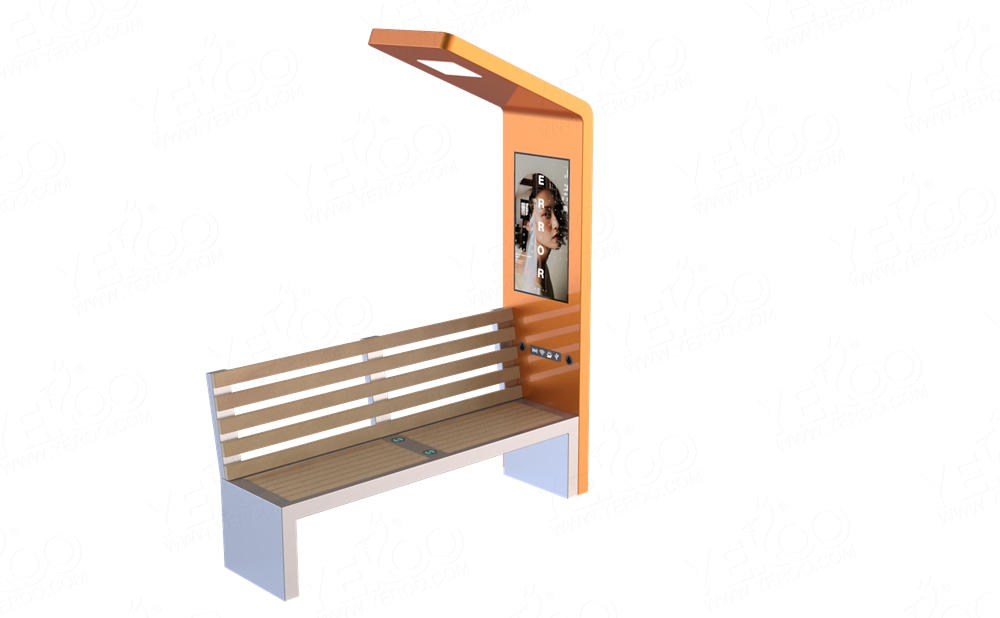In recent years, solar-powered benches have emerged as innovative solutions to several challenges faced in urban environments. Combining traditional seating amenities with renewable energy technology, these benches offer a myriad of advantages, making them increasingly popular in parks, campuses, and public spaces worldwide. Here, we delve into the notable benefits of solar-powered benches and their applications in modern urban settings.
1. Renewable Energy Source: Solar-powered benches utilize clean, renewable solar energy to power various functionalities such as LED lighting, USB charging ports, and Wi-Fi hotspots. By harnessing sunlight, these benches reduce dependence on fossil fuels, thereby mitigating carbon emissions and contributing to a greener environment.
2. Sustainable Infrastructure: Integrating solar-powered benches into urban landscapes promotes sustainable infrastructure development. These benches serve as tangible examples of eco-friendly design and encourage communities to adopt environmentally conscious practices. Furthermore, they support the transition towards a more sustainable and resilient urban infrastructure.
3. Enhanced Connectivity: Solar-powered benches often feature built-in USB charging ports and Wi-Fi capabilities, fostering connectivity in public spaces. Visitors can conveniently charge their electronic devices while enjoying outdoor settings, promoting social interaction and engagement. This connectivity also benefits students, professionals, and tourists who rely on digital devices for communication and information access.

4. Extended Accessibility: Traditional benches are limited in their functionality, providing seating without additional amenities. In contrast, solar-powered benches offer enhanced accessibility by incorporating features such as LED lighting, which extends the usability of outdoor spaces during evenings and nights. This extended accessibility promotes safety and facilitates recreational activities beyond daylight hours.
5. Cost-Efficiency: While the initial investment in solar-powered benches may be higher than traditional counterparts, they offer long-term cost-efficiency. Once installed, these benches harness free solar energy, reducing operational costs associated with conventional electricity consumption. Moreover, they require minimal maintenance, resulting in overall savings for municipalities and organizations.
6. Promotion of Renewable Energy Awareness: Solar-powered benches serve as educational tools to raise awareness about renewable energy technologies. By integrating them into public spaces, communities are exposed to practical demonstrations of solar power generation, fostering interest and understanding of sustainable energy solutions. This awareness contributes to broader initiatives aimed at promoting renewable energy adoption and environmental stewardship.
7. Customization and Adaptability: Solar-powered benches come in various designs and configurations, offering customization options to suit diverse urban settings and user preferences. From sleek, modern designs to more traditional styles, these benches can be tailored to complement architectural aesthetics and enhance the overall ambiance of public spaces. Additionally, their modular nature allows for easy installation and scalability, accommodating evolving urban landscapes and changing energy demands.
The widespread adoption of solar-powered benches represents a significant step towards sustainable urban development. By harnessing solar energy, these benches offer numerous advantages, including renewable power generation, enhanced connectivity, extended accessibility, and cost-efficiency. Moreover, they serve as symbols of renewable energy awareness and contribute to the creation of vibrant, eco-friendly urban environments. As cities continue to prioritize sustainability and resilience, solar-powered benches are poised to play an increasingly integral role in shaping the future of urban landscapes.








 Share to:
Share to: